Dashi with elegant and moderate Umami flavor. It's best suited for vegan due to not using any animal product.
For easier hot water dashi, click here. For elegant Dashi made of cold water, click here.


The secret to daintiness of Japanese food is in the Kombu seaweed and its Umami.
You might think it's complicated to replicate authentic Japanese food, but it's not! On this page, we'll show several different kinds of Dashi broth and you'll be surprise how easy it is to make Dashi broth from scratch. Just with these recipes, your everyday meal will be delighted with Umami!
| Water | Kombu Seaweed |
|---|---|
| 16.9 fl. oz (500ml) | 0.18oz (5g) |
| 33.8 fl. oz (1,000ml) | 0.35oz (10g) |
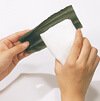
 Wipe surface of Kombu seaweed with a tightly wrung kitchen cloth.
Wipe surface of Kombu seaweed with a tightly wrung kitchen cloth.
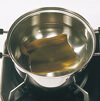
 Pour water and add Kombu seaweed. Put on the medium heat and let it boil.
Pour water and add Kombu seaweed. Put on the medium heat and let it boil.
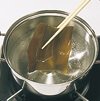
 Take out Kombu seaweed right before water boils.
Take out Kombu seaweed right before water boils.
| Water | Kombu Seaweed |
|---|---|
| 16.9 fl. oz (500ml) | 0.35oz (10g) |
| 33.8 fl. oz (1,000ml) | 0.7oz (20g) |

 Wipe surface of Kombu seaweed with a tightly wrung kitchen cloth.
Wipe surface of Kombu seaweed with a tightly wrung kitchen cloth.
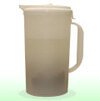
 Add water and Kombu seaweed in airtight container and let it soak for 10hours.
Add water and Kombu seaweed in airtight container and let it soak for 10hours.
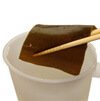
 Take out Kombu seaweed. Use it on the pot as it is necessary.
Take out Kombu seaweed. Use it on the pot as it is necessary.
| Water | Kombu Seaweed | Bonito Flakes |
|---|---|---|
| 16.9 fl. oz (500ml) | 0.35oz (10g) | 0.28oz (8g) |
| 33.8 fl. oz (1,000ml) | 0.7oz (20g) | 0.52oz (15g) |

 Wipe surface of Kombu seaweed with a tightly wrung kitchen cloth.
Wipe surface of Kombu seaweed with a tightly wrung kitchen cloth.

 Pour water and add Kombu seaweed. Put on the medium heat and let it boil.
Pour water and add Kombu seaweed. Put on the medium heat and let it boil.

 Take out Kombu seaweed right before water boils.
Take out Kombu seaweed right before water boils.
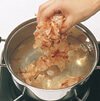
 Add bonito flakes. Turn off the heat when water is boiled.
Add bonito flakes. Turn off the heat when water is boiled.
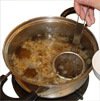
 Trim off the scum and leave to rest for 30 secs.
Trim off the scum and leave to rest for 30 secs.
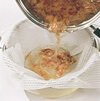
 Strain Dashi with paper towel.
Strain Dashi with paper towel.
| Water | Kombu Seaweed | Bonito Flakes |
|---|---|---|
| 16.9 fl. oz (500ml) | 0.18oz (5g) | 0.28oz (8g) |
| 33.8 fl. oz (1,000ml) | 0.35oz (10g) | 0.52oz (15g) |

 Wipe surface of Kombu seaweed with a tightly wrung kitchen cloth.
Wipe surface of Kombu seaweed with a tightly wrung kitchen cloth.
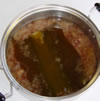
 Pour water and add kombu seaweed and bonito flakes in the pot. Put on the medium heat and let it boil.
Pour water and add kombu seaweed and bonito flakes in the pot. Put on the medium heat and let it boil.

 Once boiled, put on low heat and let it simmer for 10min.
Once boiled, put on low heat and let it simmer for 10min.

 Trim off the scum and leave to rest for 30 secs.
Trim off the scum and leave to rest for 30 secs.

 Strain Dashi with paper towel.
Strain Dashi with paper towel.
| Water | Kombu Seaweed | Bonito Flakes | Bonito Flakes for Niban-Dashi |
|---|---|---|---|
| 16.9 fl. oz (500ml) | Kombu seaweed and bonito flakes used in Ichiban-Dashi | 0.08oz (2.5g) | |
| 33.8 fl. oz (1,000ml) | Kombu seaweed and bonito flakes used in Ichiban-Dashi | 0.18oz (5g) | |

 Pour water and left over Kombu seaweed and bonito flakes from Ichiban-Dashi and put on high heat.
Pour water and left over Kombu seaweed and bonito flakes from Ichiban-Dashi and put on high heat.

 Once boiled, put on low heat and let it simmer for 10min.
Once boiled, put on low heat and let it simmer for 10min.
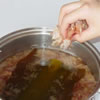
 Add bonito flakes for Niban-Dashi and turn off the heat.
Add bonito flakes for Niban-Dashi and turn off the heat.

 Trim off the scum and leave to rest for 30 secs.
Trim off the scum and leave to rest for 30 secs.

 Strain Dashi with paper towel.
Strain Dashi with paper towel.
| Different Kinds of Dashi using Kombu seaweed | Characteristics | Recipes using Dashi |
|---|---|---|
| Kombu Dashi (Vegan Dashi) |
Dashi with elegant and moderate Umami flavor. It's best suited for vegan due to not using any animal product. It's suited for dishes that utilize ingredients flavor and aroma. Making Dashi from hot water is recommended for easier preparation, and cold water to enjoy more elegant flavor. | |
| Ichiban-Dashi/First Dashi(Aromatic Dashi) | Known as best Dashi in Japan. Best suited for soup menu that heavily relies on flavor of soup broth due to its mild and rich aroma. Traditionally in Japan, "Niban-Dashi / Second dashi", a dashi described in the page, were made using these dashi ingredients. Thus, "first" in this context means "dashi that is made first." |
|
| Nidashi(Dashi with bolder Umami) (Same flavor can be enjoyed by re-using Ichiban Dashi ingredients called Niban Dashi) |
Dashi filled with Umami by simmering ingredients. It's best suited for soup base for dish using other seasonings to flavor such as simmering dish. |